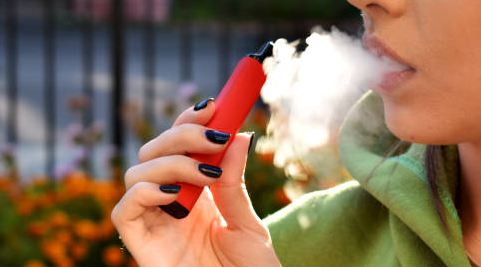On 1 July 2024, Community pharmacies became the only place to legally purchase nicotine-containing vapes.
From 1 October, even the need for a prescription will be scrapped, and anyone over 18 will be able to purchase vaping products over-the-counter in community pharmacies, signaling expanded access to these products that will put a new generation of young people in harm’s way.
The changes, passed in the Senate last week following a deal struck with the Greens, saw the down-scheduling of vapes from Prescription-only (Schedule 4) to Pharmacist-only (Schedule 3)
The original Bill was intended to crack down on the importation, distribution and sale of nicotine-containing vapes by making them illegal except for as part of smoking cessation plans for patients in consultation with their GP.
It had the support of 63 patient, healthcare and school groups including the Australian Medical Association, the Cancer Council, Lung Foundation Australia, the Public Health Association of Australia, and the Royal Australian College of General Practitioners.
Amendments to the Bill were proposed by the Greens and only made public in a media release on Monday last week.
The Pharmacy Guild of Australia Vice President Mr Anthony Tassone said, “We were gobsmacked, and questioned why we were not involved in the conversation [about] this very important issue.
“The best policy is brought together when we have the right people in a room, including health professionals and patients affected by the decision, sitting down together to have the conversation.”
Strong opposition came from the Pharmaceutical Society of Australia, TerryWhite Chemmart, Priceline, National Pharmacies, Blooms and Pharmacy 777 pharmacy groups as well as thousands of independent pharmacies, many of whom have come out saying they will not support their pharmacies stocking vaping products.
Vaping products have not been approved by the Therapeutic Goods Administration (TGA) and no nicotine-containing vape is listed on the Australian Register of Therapeutic Goods.
“Pharmacists are healthcare professionals and community pharmacies do not want to supply this potentially harmful, highly addictive product without a prescription,” Mr Tassone continued.
“Pharmacists can only supply a Schedule 3 medicine if there is an established therapeutic need. When we don’t know the long-term effects of vapes on patient safety, how can a pharmacist make an informed decision?”
Vaping has long-term patient harms, including cancer, lung-scarring and nicotine addiction. There is limited evidence to support the use of vaping products for smoking cessation and nicotine dependence.
Mr Tassone said, “We welcome any initiatives that are going to reduce the likelihood of having vapes in the hands of kids and teenagers, but having non-prescription availability through community pharmacies is not the solution.
“Vape sales will not require any recording or monitoring, so how do we ensure safety and appropriateness?”
This lack of oversight means individuals can potentially stockpile vapes from multiple pharmacies and sell them to children and teenagers. Around 70% of teenage vapers already source their vapes from other individuals rather than direct purchase.
Significant questions remain about the impact the amendments will have on pharmacy insurance premiums, business risks and regulatory compliance. It is also unclear how this change will address concerns around the availability of black-market vapes and organised crime.
“There are still so many questions that need to be asked, but neither the Guild nor other healthcare experts have been allowed to be part of the conversation. We need a broader conversation with the right people,” Mr Tassone concluded.


